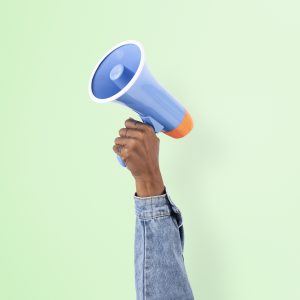Future of Audio Marketing

2021 was a year of challenges for small and big organizations to adapt to the new digital spaces of marketing and advertising. Interestingly, the year also offered multiple opportunities to the concept of audio in marketing. This concept was quickly adopted by businesses and is adapting and thriving and used by many businesses.
Most adults are frequently streaming music, podcasts, and news. This had gained an additional fillip during the pandemic. The world of podcasts can be seen as the future since the pre-pandemic era and is the biggest possible upcoming source of audio trends. It comes as no surprise since work from home has been adopted by the corporate world across the globe causing a steep rise mainly in action shows that make up the podcast universe.
As more brands and platforms are adopting an audio culture to build followers and engagement, machine learning will be of immense help. It can gauge and dissect user behavior, content consumption, and data analytics to promote audio marketing. It can also leverage data to reach the audience by interests and choices. This enables businesses to personalize the marketing strategy by reaching out to the target audience who need to hear it the most. It is this level of personalization that has caused an increase in demand for audio content and experiences which is gaining prominence in brands and marketers.
Digital Audio Advertising needs a game plan
The need to build a smart marketing strategy around audio experiences is to learn the type of audio content that the potential TG consumes. Growing demand for smart home technology and on-the-go devices will drive listenership that brands can take advantage of.
Why Digital Audio Advertising is Important!
How does digital audio advertising get in sync in the marketing playbook? It reaches consumers where they are. Radio ads can target consumers on the move or while they are at the gym, or on the run. Audio can thus plug the gaps when consumers cannot look at devices.
Audio advertising can provide for strategic profile targeting. Behavioral, device-type, or geographical-based content can be utilized.
With analytics and attribution models available for marketers, ads can reach the right TG with appropriate messages at the right time. Research has shown that podcast listeners have made purchases after listening to ads.
The future of audio marketing
Auditory senses are highly responsive to sound and music can be considered as loved by all. The quality of sound output has drastically improved across devices. Audio promotional formats are cost-effective to produce. In the digital economy, the creator economy of content-generating audiences will help spur growth in audio impact.
Choosing the right music helps your brand messages come across in the right way. Music and SFX in podcasts or advertising triggers emotional chords. It also dictates the context associated with the brand being advertised.

Audio marketing needs to be supported by data-driven personalization that assists the brand to personalize audio ads in real-time. This ensures that the version the listener hears is the most relevant to the immediate situation. Using advanced capabilities, various versions of creative formats can effectively be combined based on according to data and insights that include user preferences or even the device being used. Using AI-based tools to generate multiple Voiceover renditions helps make personalizing the same ad to be used across TG segments.
Listening to catchy signature tunes and ad jingles always spark an emotional or a feel-good response amongst consumers. With digital music platforms getting popular, using audio to reinforce brand values will be an economical way to connect with younger audiences.
The author, Dhara Shah is the Chief Marketing Officer at Allied Digital Services



